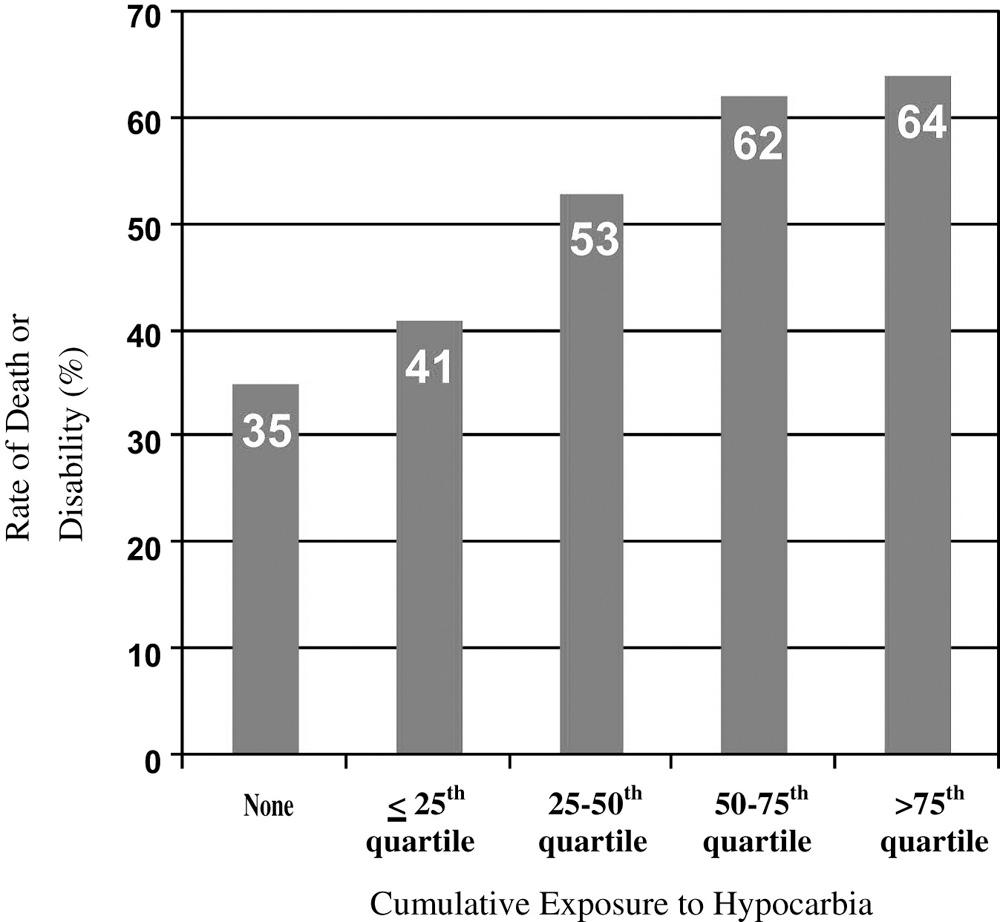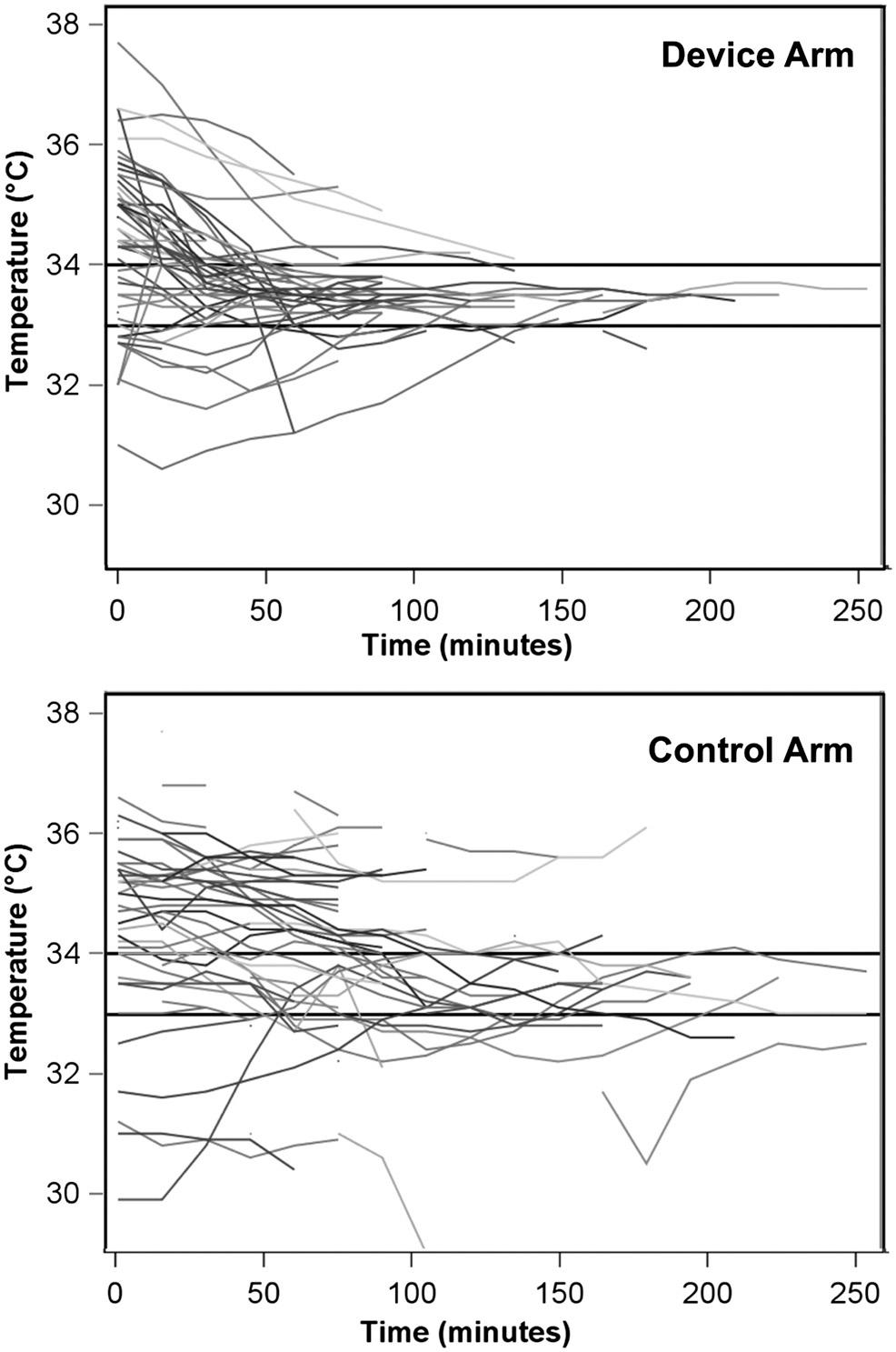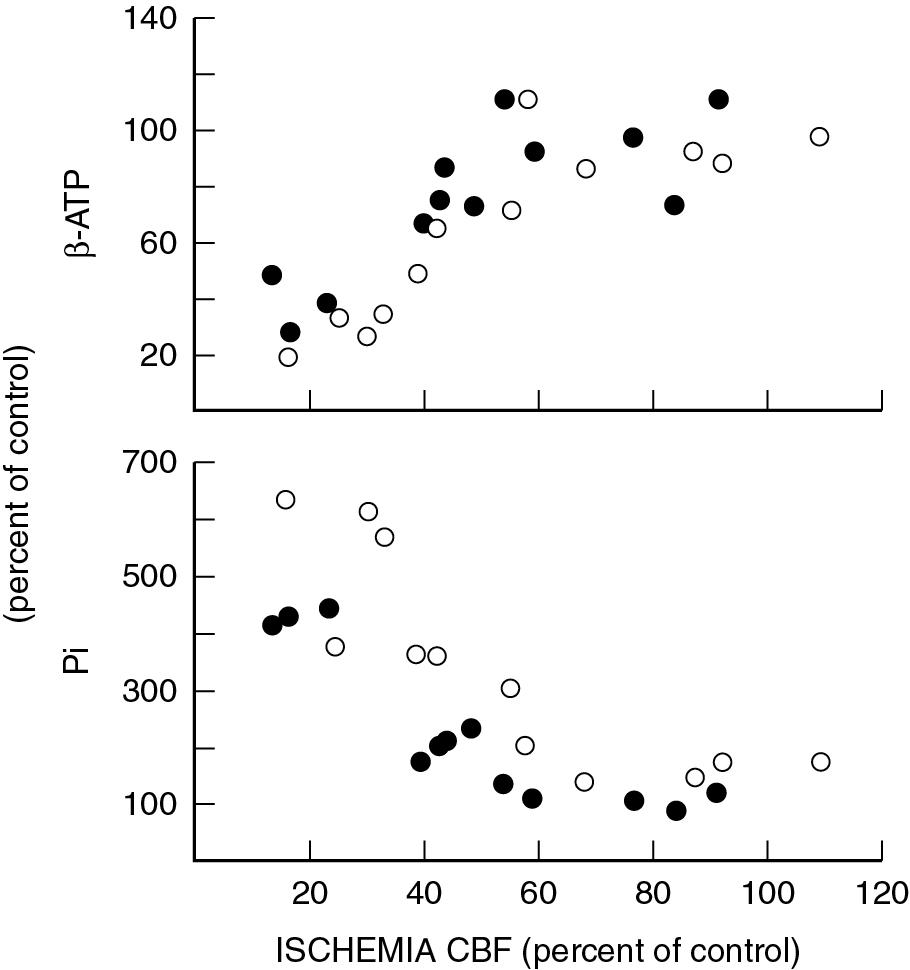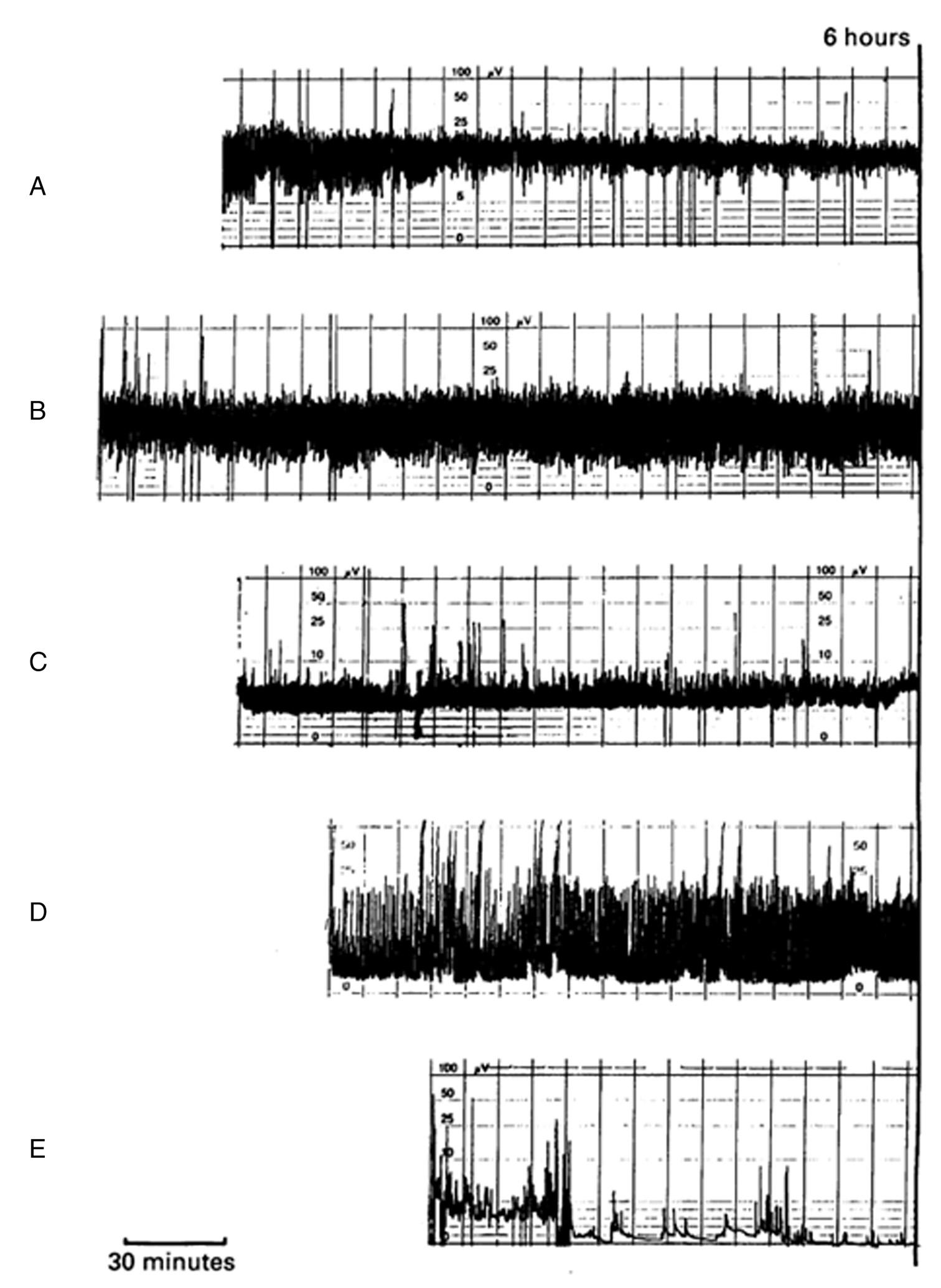Physical Address
304 North Cardinal St.
Dorchester Center, MA 02124
Perinatal asphyxia is a challenging condition because it represents a modifiable etiology for neonatal encephalopathy with the use of hypothermia. This contrasts with other etiologies of neonatal encephalopathy that are not amenable to treatment, such as cerebral malformations, strokes, congenital acquired infections, teratogenic exposures, and cerebral hemorrhages. To be effective, hypothermia needs to be initiated early in life, typically within 6 hours following birth based on results from multiple clinical trials ( ; ; ; ; ). The implication for clinicians is that they need to be well versed with perinatal asphyxia and understand facets of presentation, stabilization, diagnosis, medical management, and hypothermia treatment. The cases presented in this chapter were chosen to address some of these issues. It is important to recognize that for many management issues, data is available to guide what not to do and not necessarily justify the optimal strategy.
Perinatal asphyxia is a complex entity because it is difficult to readily translate the physiologic concept of asphyxia into an easy clinical definition. Asphyxia represents an impairment of gas exchange and is characterized by hypoxia and hypercapnia. Central to the pathogenesis of asphyxia-induced brain injury is ischemia, reductions in cerebral blood flow. Hence the use of the term perinatal hypoxia–ischemia as an alternative to asphyxia. Impaired gas exchange will result in ischemia depending on the duration and extent of hypoxia and/or hypercapnia. The clinical manifestation of brain involvement secondary to asphyxia is encephalopathy with or without seizures. Correlations between physiologic derangements (hypoxia, hypercapnia, and ischemia) and the presence and severity of encephalopathy are most readily recognized at the extremes of aberrant gas exchange. The concordance between more moderate abnormal gas exchange and encephalopathy is not as clear and reflects limited tools to assess fetal condition (fetal heart rate tracing, sonography, Doppler ultrasound, scalp pH, umbilical cord blood gases) and measure cerebral blood flow in utero and/or following birth. In view of the importance of hypoxia and ischemia in the pathogenesis of tissue injury, the term hypoxic–ischemic encephalopathy (HIE) is often used interchangeably with perinatal asphyxia.
Case Summary: A female was born at 37 4 ⁄ 7 weeks to a 39-year-old gravida 6, now para 3 mother and had a birth weight of 3720 g. The mother presented to the hospital with decreased fetal movement, and fetal heart rate monitoring revealed a nonreassuring heart rate tracing (category III, minimal variability and presence of decelerations). Prenatal laboratory assessments were unremarkable except for colonization with group B Streptococcus (GBS). The mother was not in labor, membranes were intact, and the presentation was vertex. An emergent cesarean section was performed, and rupture of membranes revealed meconium-stained fluid. The infant was nonvigorous, underwent drying and warming, but remained limp and cyanotic and without respiratory effort. Resuscitative measures included positive pressure ventilation, 100% oxygen for poor color and low oxygen saturation (SpO 2 ), which always remained 40% to 45% with 100% oxygen. The infant remained hypotonic; had Apgar scores of 1, 4, 5, and 6 at 1, 5, 10, and 15 minutes respectively; and was transferred to the NICU at 22 minutes after birth. The umbilical vein and artery pH and blood gases, respectively, were pH 7.06 and 6.89, P o 2 under 20 mm Hg and under 20 mm Hg, P co 2 68.2 mm Hg and 110.0 mm Hg, and a base excess −11.9 and −14.3 mmol/L. Admission vital signs included a heart rate of 152 bpm, respiratory rate of 40 breaths/minute, blood pressure of 51/24, mean of 33 mm Hg, and an axilla temperature of 37.0°C. On examination, the infant had minimal spontaneous movement; breathing was synchronous with ventilator breaths, slightly weak pulses, and a prolonged capillary refill time and a harsh murmur along the left sternal border. The admission blood glucose concentration was 151 mg/dL and hematocrit was 47%.
The initial arterial blood gas in the NICU at 90 minutes was a pH 7.07, P co 2 65 mm Hg, P o 2 23 mm Hg and a base excess −11.7 mmol/L. What should be the target range of P co 2 for an infant with the above history?
20 to 30 mm Hg
31 to 40 mm Hg
41 to 50 mm Hg
Over 50 mm Hg
Which oxygen saturation range would be most appropriate for stabilizing and caring for the infant?
85% to 89%
96% to 100%
80% to 84%
92% to 98%
What core body temperature should be used to care for this infant upon NICU admission and initial stabilization?
36°C
37°C
33.5°C
36.5° to 37.5°C
What range of blood glucose concentrations would be acceptable and optimal for this infant during stabilization after admission to the NICU?
>150 mg/dL
50 to 80 mg/dL
30 to 45 mg/dL
100 to 150 mg/dL
Due to the clinical assessment of hypoperfusion and low blood pressure on admission, volume expansion was ordered. A peripheral intravenous line was started. Which fluid would be most appropriate in this setting?
Packed red blood cells, type O negative, unmatched, emergency release
10% dextrose
Normal saline
Albumin 5%
Following volume expansion, clinical perfusion and blood pressure improved. An initial chest x-ray revealed a right-sided pneumothorax resulting in a shift of the mediastinum. Clinical assessment of chest wall movement appeared adequate using pressure support ventilation with a peak inspiratory pressure of 30 cm mm Hg and a PEEP of 8 cm mm Hg. A follow-up arterial blood gas at 150 minutes indicated a pH of 7.39, P co 2 of 35.2 mm Hg, P o 2 of 30 mm Hg, and base deficit of −4.4 mmol/L; however, the SpO 2 values remained fixed at 50%. Pre- and postductal SpO 2 values did not differ. Based on the cord blood gas values, the infant qualified for a neurologic assessment for the use of hypothermia. In what order should the following be done?
Adjust the ventilator settings as needed, and perform a needle aspiration of the pneumothorax. If there is no improvement in SpO 2 value, obtain an echocardiogram and follow by a neurologic assessment.
Initiate hypothermia therapy first and then deal with pulmonary and possibly cardiac involvement.
Perform a neurologic examination before analgesic medications, give analgesia, and place a chest tube in the right pleural space. Obtain an echocardiogram to exclude congenital heart disease and then consider initiating hypothermia therapy.
Obtain an echocardiogram, give analgesia, and evacuate the right pneumothorax. Evaluate for hypothermia therapy.
Should this infant be provided seizure medication prophylaxis, and if yes, with what medication?
Yes, phenobarbital
No
Yes, levetiracetam
Yes, lorazepam
The correct answer is C. Arterial carbon dioxide tension (Pa co 2 ) is extremely important in the stabilization of an infant after impaired gas exchange before birth. The cerebral vasculature is very sensitive to changes in Pa co 2 : Increases in Pa co 2 result in cerebral vasodilatation and an increase in cerebral blood flow (CBF) provided that perfusion pressure is not impaired. Conversely, reductions in Pa co 2 reduce CBF ( ). The risk of an infant having hypo- or hypercapnia after asphyxia is high given impairments of respiratory drive, concomitant respiratory morbidities (e.g., meconium aspiration) and compensation for associated metabolic acidemia. The latter variables can impede the clinician’s ability to regulate the Pa co 2 in a desired range. Data from the Neonatal Research Network Induced Hypothermia trial examined the association between hypocapnia in the first 12 hours after birth and 18 to 22 month outcome among neonates with moderate or severe HIE ( ). The results indicate that both the minimum Pa co 2 and a calculated cumulative exposure of time with a Pa co 2 under 35 mm Hg are associated with death or disability at 18 to 22 months. The results are depicted graphically in Fig. 2.1 . A similar analysis from the CoolCap trial confirmed the association between hypocapnia and an unfavorable outcome. Answers A and B are therefore not correct, and there may be unintended consequences of Pa co 2 above 50 mm Hg on the cerebral vasculature after hypoxia–ischemia.

The correct answer is D. The relationship between arterial oxygen tension and saturation (SpO 2 ) and outcome after asphyxia is less clear compared with the effects of hypocapnia. A goal SpO 2 needs to reflect the balance of avoiding excessively low SpO 2 and potentially restricting tissue oxygen delivery with avoiding excessively high SpO 2 and exacerbating oxidative injury ( ). Answers A through C do not reflect this balance. One retrospective cohort study analyzed data from the prehypothermia era and demonstrated that severe hyperoxemia (PaO 2 >200 mm Hg) significantly increased the odds of death, cerebral palsy, or neurosensory deficits at 2 years of age ( ).
The correct answer is D. A core temperature of 36.5° to 37.5°C is recommended by the Textbook of Neonatal Resuscitation ( ). Similar to any other sick newborn in the delivery area and on admission to the NICU, the goal should always be to stabilize vital functions before specific therapies are considered. There are anecdotal reports of turning off warmers in the delivery room of late-preterm and term newborns undergoing resuscitation to allow passive cooling in anticipation of initiating therapeutic hypothermia. However, resuscitation is only one piece of evidence in the decision to use hypothermia therapy. As indicated in Fig. 2.2 , passive cooling is an ineffective means to cool and can lead to excessively low temperatures, which are potentially hazardous ( ).

The correct answer is B. Perinatal asphyxia may be associated with hypo- or hyperglycemia. Whether the blood glucose concentration contributes to asphyxial brain injury is difficult to discern from clinical data and reflects the limitations of retrospective cohort analyses. However, in animal work, hypoglycemia affects short-term markers of brain dysfunction (e.g., ATP concentration, see Fig. 2.3 ) ( ) more than hyperglycemia in the setting of brain ischemia. Consistent with laboratory observations, an analysis of the CoolCap trial suggested that the rate of death or disability at 18 months is lowest among infants with normoglycemia, intermediate in hyperglycemia, and highest in hypoglycemic infants ( ).

The correct answer is C. In the absence of blood loss, there is no indication to provide packed cells or whole blood for volume expansion given the time needed to obtain blood even if not cross-matched. Volume expansion typically narrows to a choice between normal saline and 5% albumin. A recent review suggests that there is little data to support the use of 5% albumin over normal saline ( ). With severe impairment of gas exchange, as evidenced by an arterial cord pH 6.89, there is likely to be a capillary leak. Both normal saline and 5% albumin will leak into the interstitial space, but use of albumin may exacerbate the leak because albumin in the interstitial space may pull water with it. The use of packed red blood cells minimizes leaks into the interstitium relative to normal saline or 5% albumin but is not recommend due to time and absence of cross-matching. Given the potential for myocardial dysfunction following asphyxia, volume expansion should be used judiciously.
The correct answer is C. The infant is approaching 3 hours after birth and a decision about hypothermia therapy is needed. However, SpO 2 values have been fixed at 50%, and evacuation of the pneumothorax should take priority to potentially relieve hypoxemia. An important issue is the use of analgesia, which can markedly change neurologic findings of level of consciousness, tone, spontaneous activity, etc. Although a case may be made for needle aspiration to avoid use of analgesia in treating the air leak, a pneumothorax may readily recur when on positive pressure ventilation, especially if the mean airway pressure is high. An echocardiogram before initiating hypothermia therapy is ideal because hypothermia was studied in infants without major congenital anomalies. In this case the neurologic examination indicated a moderate encephalopathy, fentanyl was given, a right chest tube was placed, an echocardiogram indicated suprasystemic pulmonary artery hypertension, and hypothermia therapy was subsequently initiated.
The correct answer is B. There is limited data to support anticonvulsant medication for seizure prophylaxis. Much of the interest stems from a small randomized trial (n = 40) to determine whether 40 mg/kg of phenobarbital given to infants following perinatal asphyxia reduces the incidence of neonatal seizures and improves outcome ( ). There was a trend toward a reduction in seizures (27%, p =.11) and a significant improvement in outcome at 3 years (p =.003) was noted, but the sample size was small and more than 20% of enrolled infants did not complete the protocol or undergo follow-up. There is no consensus that anticonvulsant prophylaxis is beneficial. However, surveillance for seizures is an integral part of care after perinatal asphyxia because the presence of clinical ( ) and electrographic seizures ( ) has been associated with worse outcome.
Case Summary A: A male infant was born at 36 0 ⁄ 7 weeks to a 43-year-old, gravida 2 now para 1 mother with a birth weight of 2610 g. The pregnancy was uncomplicated and the mother presented to the hospital with 1 hour of severe abdominal pain and decreased fetal movement. Assessment revealed fetal bradycardia and an emergent cesarean section was performed. The mother was not in labor and membranes were intact. At birth the infant was nonvigorous and without spontaneous movements, respiratory effort, grimace or tone. The heart rate was initially 60 bpm but was undetectable at 1 minute after birth. Resuscitation included positive pressure ventilation, intubation, chest compressions, and epinephrine via the endotracheal tube and then via an umbilical venous catheter. Apgar scores were 0, 0, 3, and 4 at 1, 5, 10, and 15 minutes, respectively. The umbilical venous pH and blood gases were pH 6.91, P co 2 72 mm Hg, P o 2 28 mm Hg, base excess −19.5 mmol/L and the corresponding values for the umbilical artery were pH 6.75, P co 2 96.4 mm Hg, P o 2 under 20 mm Hg, and base excess under −20 mmol/L. A placental abruption was found at delivery. Neurologic examination at 2.5 hours of age using the NICHD-modified Sarnat scoring indicated a moderate encephalopathy, and hypothermia therapy was initiated shortly thereafter.
Case Summary B: A female infant was born at 40 3 ⁄ 7 weeks to a 37-year-old, gravida 2 now para 1 mother with a birth weight of 3440 g. The mother presented to the hospital in labor after an unremarkable pregnancy. The pregnancy was considered low risk and care was provided in an alternative birthing suite for mothers who desire a normal physiologic birth within a tertiary care facility. Labor progressed to a vaginal delivery after meconium-stained amniotic fluid was noted. The infant was unexpectedly depressed at birth and pediatrics was not in attendance. After initial warming, drying, and stimulation, the obstetric staff started positive pressure ventilation. The pediatric team arrived at 2 minutes after birth and was told that the amniotic fluid was meconium stained, but the intermittent fetal heart monitoring was reassuring. The baby had poor tone, color, and respiratory effort and was intubated for meconium, but none was present and the endotracheal tube was removed. Reintubation was performed for poor respiratory effort and use of 60% Fi o 2 . The heart rate was always greater than 100 bpm. The Apgar scores were 2, 4, 4, 6, and 7 at 1, 5, 10, 15, and 20 minutes after birth. An umbilical venous gas was pH 7.20, P co 2 41.2 mm Hg, P o 2 < 20 mm Hg, and base excess −11.7 mmol/L. An umbilical arterial sample could not be obtained.
On admission to the NICU, the infant had poor perfusion and was given 10 cc/kg of normal saline after establishing vascular access, but the mean blood pressures were always over 40 mm Hg. Blood glucose concentration was unremarkable, and an arterial blood gas at less than 60 minutes had a pH 7.29, P co 2 19.2 mm Hg, P o 2 72.8 mm Hg, and base excess −14.6 mmol/L. The hematocrit was 51%, the white blood count was 31.5 × 10 3 /mcl, and the platelet count was 367 × 10 3 /mcl. A neurologic examination at 2.0 hours of age using the NIHCD-modified Sarnat scoring indicated a moderate encephalopathy, and was notable for eyes open but without responsiveness, excessive movements that could not be reduced with consoling and/or holding, repetitive sucking movements that were continuous for more than 1 hour, and intermittent tonic posturing more prominent in the upper extremities. Hypothermia therapy was initiated shortly thereafter.
Which are clinical criteria to indicate the need for a neurologic examination for the evaluation to use hypothermia?
Use of positive pressure ventilation for 5 minutes at birth irrespective of fetal acid–base state
Any base deficit >7 mmol/L at <60 minutes of age
An Apgar score of <7 at 5 minutes
Any pH <7.0 or base deficit >16 mmol/L at <60 minutes of age
What stage of encephalopathy do the following findings of Case B represent (eyes open but without responsiveness, excessive movements that could not be reduced with consoling and/or holding)?
Moderate encephalopathy
Mild encephalopathy
Severe encephalopathy
None
In multiple trials of hypothermia, an amplitude-integrated EEG (aEEG) was used as a third tier of inclusion criteria if clinical/biochemical criteria were met and a neurologic examination indicated moderate or severe encephalopathy. Which of the following aEEG recordings would merit the initiation of hypothermia therapy ( Fig. 2.4 )?
C, D, and E
A, B, and C
D and E
B and C

Is the use of hypothermia appropriate for the cases summarized above?
Case A only
Case B only
Neither case
Both cases
Which of the following etiologies should be considered or evaluated to support an association between an intrapartum event and development of encephalopathy:
Brain structure (malformation, stroke, hemorrhage)
Infection (sepsis, meningitis, pneumonia, herpes simplex virus)
Maternal medications/anesthesia
Electrolyte and/or mineral in balance
Inborn errors of metabolism
All of the above
Become a Clinical Tree membership for Full access and enjoy Unlimited articles
If you are a member. Log in here